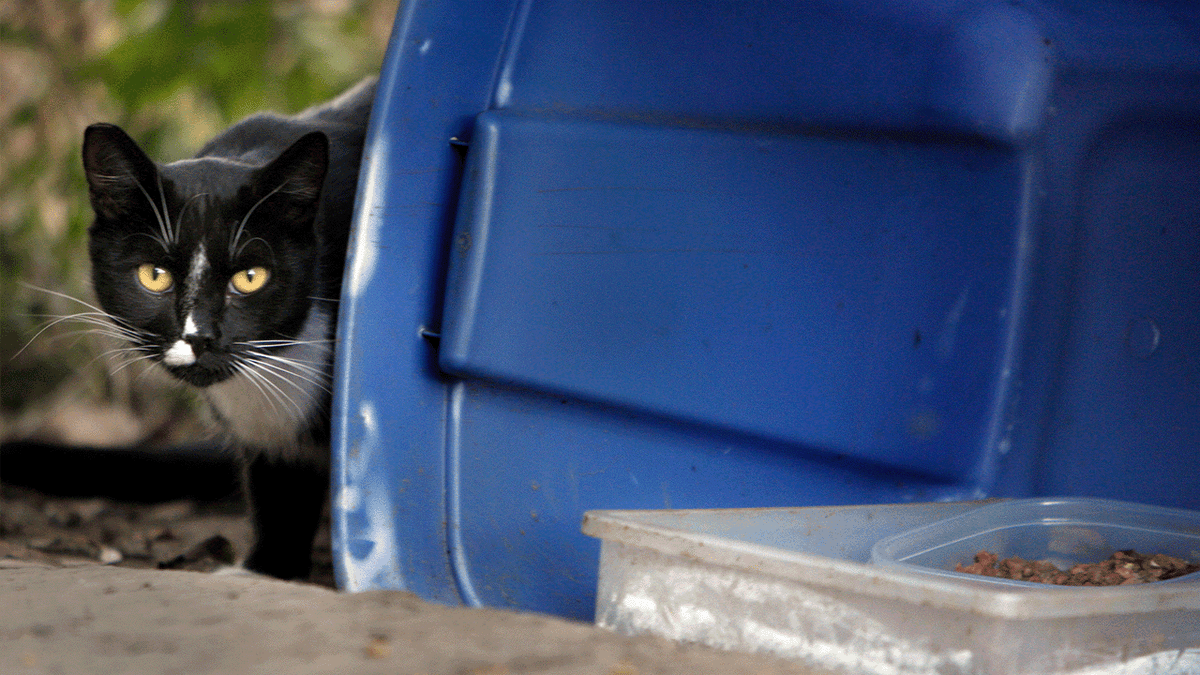250,000 birds euthanized in California
Animal disease experts are raising concern about the spread of the avian flu in the Bay Area after two farms euthanized around 250,000 birds this week.
Community leaders, nonprofits and government agencies are racing to curtail an exploding cat population in Los Angeles, where animal advocates estimate there are almost as many felines as there are people.
The Citywide Cat Program estimates there are around 960,000 unowned "community cats" in the City of Los Angeles, but various nonprofits and animal rights groups have suggested this number could be as high as three million in a city of 4 million humans.
The program was approved in late 2020 and in February 2020, the Los Angeles Board of Animal Services Commissioners adopted rules and regulations applicable to the trapping of cats, so long as it adheres to permits issued by the Department of Animal Services.
"By engaging individuals and community organizations to humanely trap community cats, spay and neuter them, and then return the sterilized cats back to their outdoor homes — where they were found — will reduce the number of unowned, stray cats in our streets and shelters," the program's website states.
MAINE'S SURGE IN CAT POPULATION CAUSES CROWDED ANIMAL SHELTERS: 'SAD SCENARIO'

A vet removes a cat, under the effects of anesthetic injection, from a trap to get it fixed at Fix Nation Inc., a nonprofit organization and full-time spay/neuter clinic in Sun Valley for homeless, stray and feral cats. ((Photo by Irfan Khan/Los Angeles Times via Getty Images))
The process of trapping, neutering and returning unowned cats is more commonly known as TNR, one of several methods communities are using to control evolving cat populations.
Experts and proponents of the movement have said the spaying of community cats can prevent unwanted litters, decrease the number of cats euthanized, improve their health, reduce nuisance behavior and help save taxpayer dollars spent on putting cats in municipal shelters.
Dr. Alex Crow, a veterinary surgeon focused on laparoscopic neutering, said the population of feral cats is difficult to determine as they often keep their distance from people. But with many around, Crow said they are causing some issues that people may not be aware of.
He noted that large groups of feral cats (reaching up to 200 cats per cluster) frequently hunt lots of local birds and small animals, which, over time, can take its toll on the wildlife population. Research suggests that feral cats have reduced the population of at least 27 species.
"They're also a public health risk since they can carry things like fleas, ticks, and ear mites that jump onto our pets and even us. It's not uncommon for me to treat dogs and indoor cats who suddenly have fleas or ticks out of nowhere, thanks to a feral cat colony nearby," he added.
The massive cat population in Los Angeles is not unique to the City of Angels. Brooklyn nonprofit Flatbush Cats estimates that as many as half a million feral cats live in New York City.
NYC MAYOR BLAMES, IN PART, RAT INFESTATION ON WHY PEOPLE ARE LEAVING THE BIG APPLE

Stray cats eat dry cat food placed there by Augustine Hurtado on the corner of Griffith Ave. and 24th St. in South Los Angeles. ((Mel Melcon/Los Angeles Times via Getty Images))
Istanbul, Turkey, has had hundreds of thousands of cats roaming the city for centuries, earning it the nickname of the City of Cats or "Catstanbul." Australia, in particular, has been proposing several extreme laws to control a rapidly expanding cat population.
Access to facilities and shelter, the weather (lack of freezing temperatures), the number of people offering food, and the average cat's survival rate all determine areas that are likely to experience cat overpopulation.
Dr. Sara Ochoa, a vet practicing in the Los Angeles area, said she has witnessed firsthand the city's challenges regarding the cat population.
"On a daily basis, I see the results- cats left abandoned and struggling to survive on the streets. My own neighborhood has several colonies of strays that locals try to manage through makeshift TNR efforts. My heart goes out to these animals," she said.
Crow claimed that the TNR has done little to decrease the cat population or address the long-term disease risk since they are still freely roaming. During his career, he surmised that the number of wild cat cases in his facility has doubled.
"A better strategy is carefully removing feral colonies in sensitive wildlife areas, which has led to real declines, according to groups I've worked with," he said.
Ochoa agreed with Crow that TNR alone cannot "realistically cope" with the sheer number of cats the city sees.
"No matter what people say, that's the reality. I've participated in rescue group efforts to trap, neuter and return cats in abandoned industrial sites, yet the populations seem to rebound rapidly. More needs to be done," she said.
HAWAII’S STRAY CATS POSE MAJOR THREAT TO PROTECTED SPECIES: WHY VISITORS SHOULD BE CAUTIOUS

One of the feral cats living in the bushes around Cal State Long Beach keeps a wary eye on a visitor next to one of the feeding stations set up by volunteers. ((Photo by Mark Boster/Los Angeles Times via Getty Images))
Responsible ownership through indoor confinement and spaying/neutering goes a long way into cutting Los Angeles' growing feral cat situation down to size, Crow added.
"Large-scale removals are also needed where colonies threaten sensitive habitats. We can better manage this issue with the right balanced approach while still caring for ferals," he said.
In her practice, Ochoa makes it a point to educate clients on spaying/neutering. However, budgets are tight, and there are more cats than resources available. She often supports the exploration of vouchers to expand access and creative solutions that bring together local leaders and resource groups.
"The feral cat population got out of hand due to human actions. It will take human cooperation to humanely address it," she added.
"Rover" Applied Animal Behaviorist Dr. Mikel Delgado told Fox News Digital that cats are very prolific reproducers with the capacity to have multiple litters several times a year and from a very young age. Research suggests that cats can give birth to up to 24 kittens every year from the time they are four months old.
She noted that "community cats" is the preferred nomenclature over "feral cats," as not all cats living outside have been deprived of human socialization. Additionally, some are actually house cats that have been abandoned or released.
US NATIONAL PARK SERVICE TO REMOVE HUNDREDS OF STRAY CATS FROM HISTORIC TOURIST SPOT

The Los Angeles Police Department has previously used feral cats to keep rats at bay. ((Photo by Bob Chamberlin/Los Angeles Times via Getty Images))
For example, a socialized cat typically is handled and has positive interactions with humans during the window when they are between 2 and 7 weeks old. These cats are more likely to grow into loving pets, whereas cats that are deprived of this interaction are more likely to be wary or shy when approached by a human, thus leading to the term "feral."
Delgado, a leading national cat expert, noted that one of the big obstacles with TNR is the shortage of access to care that would allow a mass number of animals, including people's pets, to get neutered. She also stressed that evidence suggests killing off segments of the population would not be any more effective.
If more pet owners had access to free spay-neuter, and it was simpler to complete the process, Delgado surmised it could limit behavioral problems that might lead to a cat being removed from a person's house and reproducing out on the street.
"The question, I think, really is, is this a problem that we can even solve given the current technology we have to control the reproduction?" Delgado said.
"We have created a relationship with them over the past several thousand years, and we have an obligation to care for them because we basically created them," she added.

